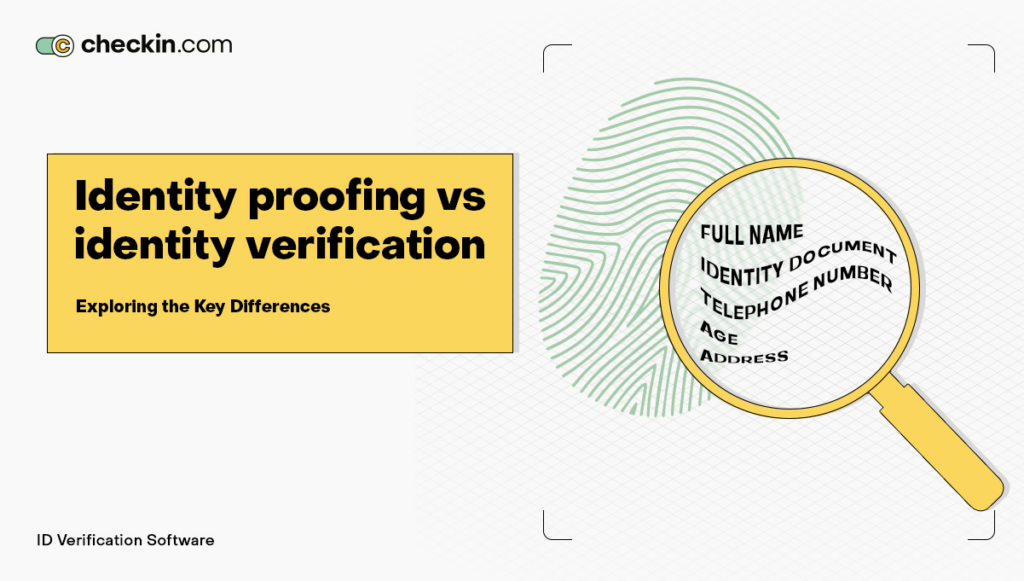In today’s digital world, ensuring secure transactions and building trust between users and service providers is of utmost importance.
Identity proofing and id verification service are two crucial processes that play a vital role in achieving these objectives. Although they share the common goal of establishing and confirming an individual’s identity, they differ in their methods and applications.
This article aims to provide a comprehensive understanding of the distinctions between identity proofing and identity verification and their significance in the ongoing battle against fraud.
I. Understanding Identity Proofing
Identity proofing involves verifying the legitimacy of an individual’s claimed identity. It encompasses the collection and analysis of various types of evidence to establish the accuracy and trustworthiness of the identity claim. Let’s explore the key aspects of identity proofing:
- Personal Attributes: Personal attributes, such as name, address, date of birth, and social security number, are evaluated against authoritative sources and trusted databases to ensure consistency and accuracy.
- Document Validation: Official documents like passports and driver’s licenses are scrutinized for security features such as holograms, watermarks, and unique identification numbers to validate their authenticity.
- Biometric Data Analysis: Biometric data, such as fingerprints and facial recognition, is increasingly used to enhance identity proofing. By comparing the captured biometric data against existing databases, organizations can improve accuracy and reliability.
II. Exploring Identity Verification
Identity verification focuses on confirming the accuracy of the information provided by an individual, ensuring that they are indeed who they claim to be. Let’s delve into the key aspects of identity verification:
- Knowledge-Based Verification: Specific questions are asked, relying on personal information only known to the genuine individual. This method helps verify the identity claim by validating the knowledge possessed by the claimant.
- Two-Factor Authentication (2FA): By combining something the individual knows (e.g., a password) with something they possess (e.g., a unique code sent to their mobile device), 2FA adds an extra layer of security to the verification process.
- Biometric Authentication: Utilizing unique physical or behavioral characteristics, biometric authentication methods such as fingerprint scanning and facial recognition offer a high level of accuracy and convenience.
III. The Complementary Nature of Identity Proofing and Verification
Identity proofing and identity verification, though distinct processes, are often used in conjunction to establish a robust identity assurance framework. Here are a few points that highlight their complementary nature:
- Continuum of Identity Assurance: Identity proofing and verification form a continuum, with proofing establishing initial confidence and verification providing ongoing assurance throughout the user journey.
- Strengthening Security and Preventing Fraud: Employing both identity proofing and verification measures significantly enhances security and mitigates the risk of fraudulent activities, protecting the interests of both service providers and users.
[postbanner]
Conclusion
In conclusion, identity proofing and identity verification are essential components in the fight against fraud and the establishment of secure digital interactions.
While identity proofing verifies the authenticity of an individual’s identity claim, identity verification confirms the accuracy of the provided information.
By combining these processes in a complementary manner, organizations can achieve a higher level of identity confidence, protecting against various forms of fraud. Embracing these practices strengthens security, fosters trust, and ensures smoother digital interactions in today’s interconnected world.
FAQ
Are identity proofing and identity verification the same?
No, they are distinct processes. Identity proofing focuses on establishing the authenticity of an individual’s identity claim, while identity verification confirms the accuracy of the provided information.
How do biometrics contribute to identity proofing and verification?
Biometric data analysis and authentication methods enhance both identity proofing and verification processes by utilizing unique physical or behavioral characteristics to establish and confirm an individual’s identity.
Are identity proofing and identity verification the same?
No, they are distinct processes. Identity proofing focuses on establishing the authenticity of an individual’s identity claim, while identity verification confirms the accuracy of the provided information.
How do biometrics contribute to identity proofing and verification?
Biometric data analysis and authentication methods enhance both identity proofing and verification processes by utilizing unique physical or behavioral characteristics to establish and confirm an individual’s identity.


